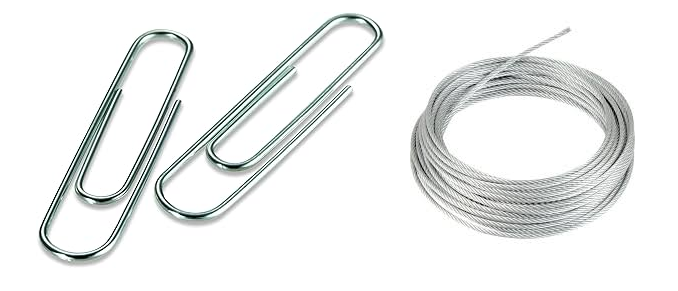
Recently I read a note by a terrific wire rope expert on the west coast of Canada (Dean, thanks for your insight!) about improper use of rigging components and why the 5:1 safety factor exists. If you’re not familiar, certain parts overhead cranes and lifting gear must have a 5:1 safety factor. That means if the rated capacity of the overhead crane is 10 tons, the components must be able to support 50 tons at least once.
Why do we do that? Crane components, like anything else on this earth, have only so much resistance to fatigue. Whether that fatigue is cause by improper operation or a lifetime of gentle use, there is a certain limit to the life of anything. Most of use recognize that an automobile with more than 200,000 miles of travel is probably not going to last much longer. But we don’t always describe the life of certain components in terms of linear distance or time, sometimes we describe the life of components in terms of cycles. Airplanes are a great example. After so many landings, regardless of flight distances, the airplane must be rebuilt or scrapped. This is because the landing gear only stresses (fatigues) when a takeoff or landing happens.
In terms of overhead cranes and electric wire rope hoists, certain components like the wire rope or cable have a life that can be described in lifting cycles, or more accurately “bends”. In a four-part wire rope hoist, the cable bends three times as it runs over each running sheave (pulley) plus 3-10+ times as the cable winds along the drum. This fatigues the cable. Assuming proper operation, we have the 5:1 rule because a cable capable of picking up the rated capacity needs to be capable of picking up the rated capacity repeatedly, and bending repeatedly. A cable that can lift perhaps 10 tons once, may not be able to lift 10 tons hundreds or thousands of cycles. But a cable that can life 50 tons once can probably suffer through thousands of cycles.
I’ll leave the specific equations to the engineers (they’re out there in codes like the HMI and ASME chapters) but suffice it it say, well-trained engineers have decided that a 5:1 safety factor is enough for most cranes (hot metal and certain other applications excepted) to suffer through bends and cycles without breaking for the design life of the overhead crane and wire rope hoist.